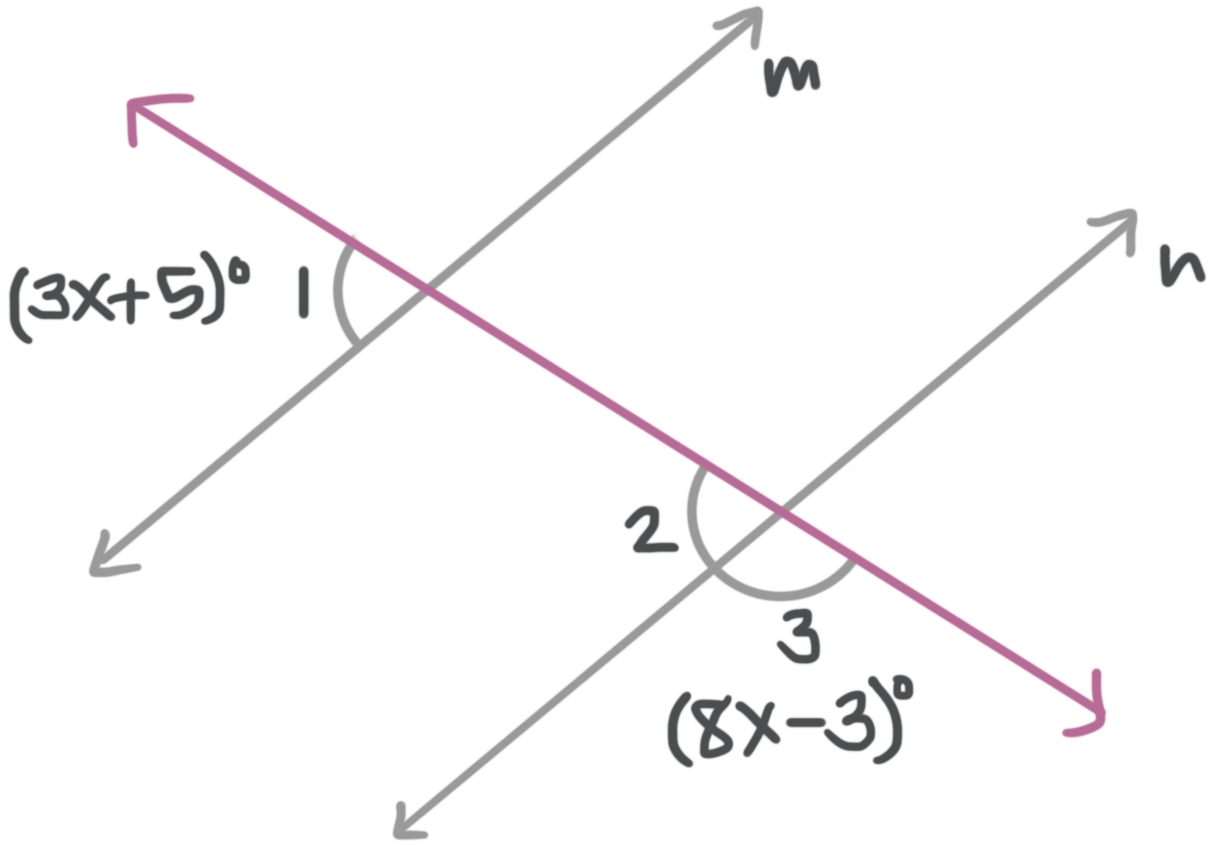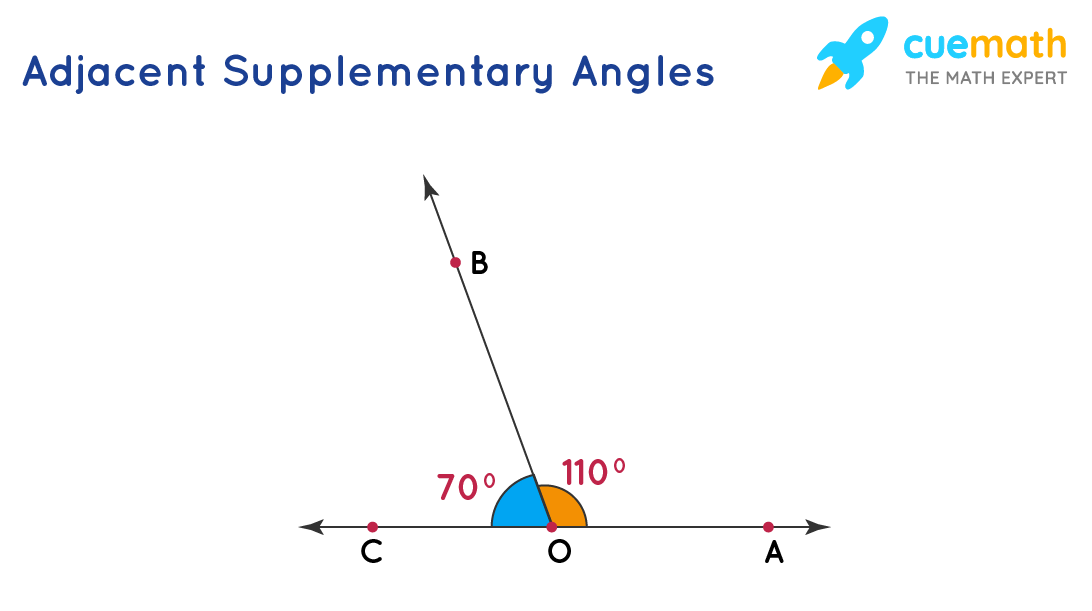Two Angles That Are Supplementary Form A Linear Pair - The angles are linear if they are. Web a linear pair is a pair of adjacent angles formed when two lines intersect. Web 1 answer zor shekhtman dec 6, 2015 not necessarily true. Two angles are said to be linear if they are adjacent. True, if they are adjacent and share a vertex and one side. Two angles forming a linear pair are supplementary, which is equal to 180 ∘. Hence, a linear pair of angles. Web two angles are adjacent if they have the same vertex, share a side, and do not overlap. Web linear pairs of angles are formed when two lines intersect or touch each other at a single point. Web when the sum of measures of two angles is 180 degrees, then the angles are called supplementary angles.
Transversals, and their special angle pairs — Krista King Math Online
We will use the following facts to help us determine if two angles. The sum of angles of a linear pair is always equal. Web supplementary angles and linear pairs both add to 180°. Web answer is option a (true) if two angles form a linear pair, the angles are supplementary. Web linear pairs of angles are formed when two.
NCERT Class 7 Mathematics Solutions Chapter 5 Linear and Angles
True, if they are adjacent and share a vertex and one side. Web when the sum of measures of two angles is 180 degrees, then the angles are called supplementary angles. We will use the following facts to help us determine if two angles. Web if two angles form a linear pair, the angles are supplementary, whose measures add up.
Pairs Of Angles Solved Examples Geometry
In the figure, ∠ 1 and ∠ 2 form a linear pair. Two angles may be supplementary, but not adjacent. Web solution verified by toppr correct option is b) the linear pair are angles who are adjacent and supplementary. But, all linear pairs are supplementary. For example, ∠ a =.
Transversals and Parallel Lines Geometry Math Lessons
Web supplementary angles and linear pairs both add to 180°. Web if two angles form a linear pair, the angles are supplementary, whose measures add up to 180°. If two angles are a linear pair, then they are supplementary. True, if they are adjacent and share a vertex and one side. Web the linear pair postulate says if two angles.
Lines and Angles Presentation Astronomy
Web jan 31, 2016 not all supplementary angle form a linear pair. A linear pair (two angles that form a line) will always be supplementary. We will use the following facts to help us determine if two angles. Web the angles are said to be linear if they are adjacent to each other after the intersection of the two lines..
Which statement is true about this argument? Premises If two angles
But, all linear pairs are supplementary. In the figure, ∠ 1 and ∠ 2 form a linear pair. Web the linear pair postulate says if two angles form a linear pair, then the measures of the angles add up to 180°. Web two angles are adjacent if they have the same vertex, share a side, and do not overlap. Web.
PPT Lesson 2.6 Parallel Lines cut by a Transversal PowerPoint
Web click here 👆 to get an answer to your question ️ if two angles are supplementary, they form a linear pair. True, if they are adjacent and share a vertex and one side. Web define angle forming linear pair. Two angles are said to be linear if they are adjacent. Web a linear pair is a pair of adjacent.
Complementary and supplementary angle surveyvol
Web jan 31, 2016 not all supplementary angle form a linear pair. Web click here 👆 to get an answer to your question ️ if two angles are supplementary, they form a linear pair. In the figure, ∠ 1 and ∠ 2 form a linear pair. We have to determine if the given statement is true or. Web 1 answer.
Day 1 HW Angle Pairs Adjacent, vertical, supplementary, complementary
Web two angles are adjacent if they have the same vertex, share a side, and do not overlap. Web supplementary angles and linear pairs both add to 180°. Web click here 👆 to get an answer to your question ️ if two angles are supplementary, they form a linear pair. But, all linear pairs are supplementary. Two angles are said.
PPT 31 Lines and Angles Geometry PowerPoint Presentation, free
Web jan 31, 2016 not all supplementary angle form a linear pair. Web 45° + 135° = 180° therefore the angles are supplementary. Two angles forming a linear pair are supplementary, which is equal to 180 ∘. Two angles are said to be linear if they are adjacent. Web supplementary angles and linear pairs both add to 180°.
Web the angles are said to be linear if they are adjacent to each other after the intersection of the two lines. A linear pair (two angles that form a line) will always be supplementary. True, if they are adjacent and share a vertex and one side. Web a linear pair is a pair of adjacent angles formed when two lines intersect. Web the linear pair postulate says if two angles form a linear pair, then the measures of the angles add up to 180°. Web jan 31, 2016 not all supplementary angle form a linear pair. If two angles are a linear pair, then they are supplementary. The angles are linear if they are. Web if two angles form a linear pair, the angles are supplementary, whose measures add up to 180°. Two angles may be supplementary, but not adjacent. Web solution verified by toppr correct option is b) the linear pair are angles who are adjacent and supplementary. Web linear pairs of angles are formed when two lines intersect or touch each other at a single point. Two angles are said to be linear if they are adjacent. Web supplementary angles and linear pairs both add to 180°. Hence, a linear pair of angles. For example, ∠ a =. Given, two angles making a linear pair are always supplementary. We have to determine if the given statement is true or. Web are linear pairs supplementary? Web answer is option a (true) if two angles form a linear pair, the angles are supplementary.
Web The Angles Are Said To Be Linear If They Are Adjacent To Each Other After The Intersection Of The Two Lines.
For example, ∠ a =. Web define angle forming linear pair. Hence, a linear pair of angles. Web the linear pair postulate says if two angles form a linear pair, then the measures of the angles add up to 180°.
A Linear Pair Forms A Straight Angle Which.
In the figure, ∠ 1 and ∠ 2 form a linear pair. Web a linear pair is a pair of adjacent angles formed when two lines intersect. Web answer is option a (true) if two angles form a linear pair, the angles are supplementary. Two angles may be supplementary, but not adjacent.
Web Jan 31, 2016 Not All Supplementary Angle Form A Linear Pair.
A linear pair of angles is formed when two lines intersect. Web solution verified by toppr correct option is b) the linear pair are angles who are adjacent and supplementary. The angles are linear if they are. Web linear pairs of angles are formed when two lines intersect or touch each other at a single point.
Given, Two Angles Making A Linear Pair Are Always Supplementary.
Web 45° + 135° = 180° therefore the angles are supplementary. Web two angles are adjacent if they have the same vertex, share a side, and do not overlap. The sum of angles of a linear pair is always equal. True, if they are adjacent and share a vertex and one side.





.PNG)




